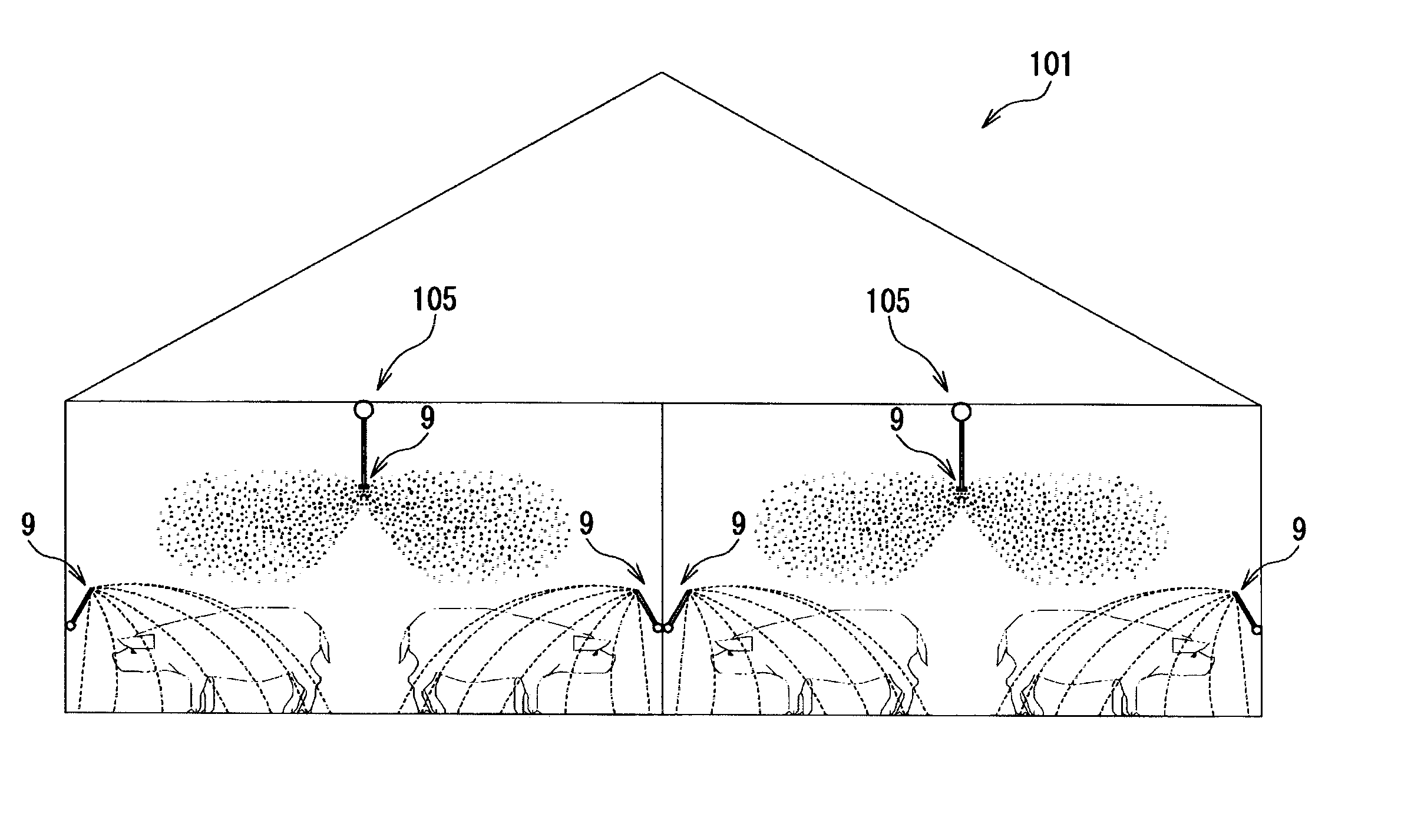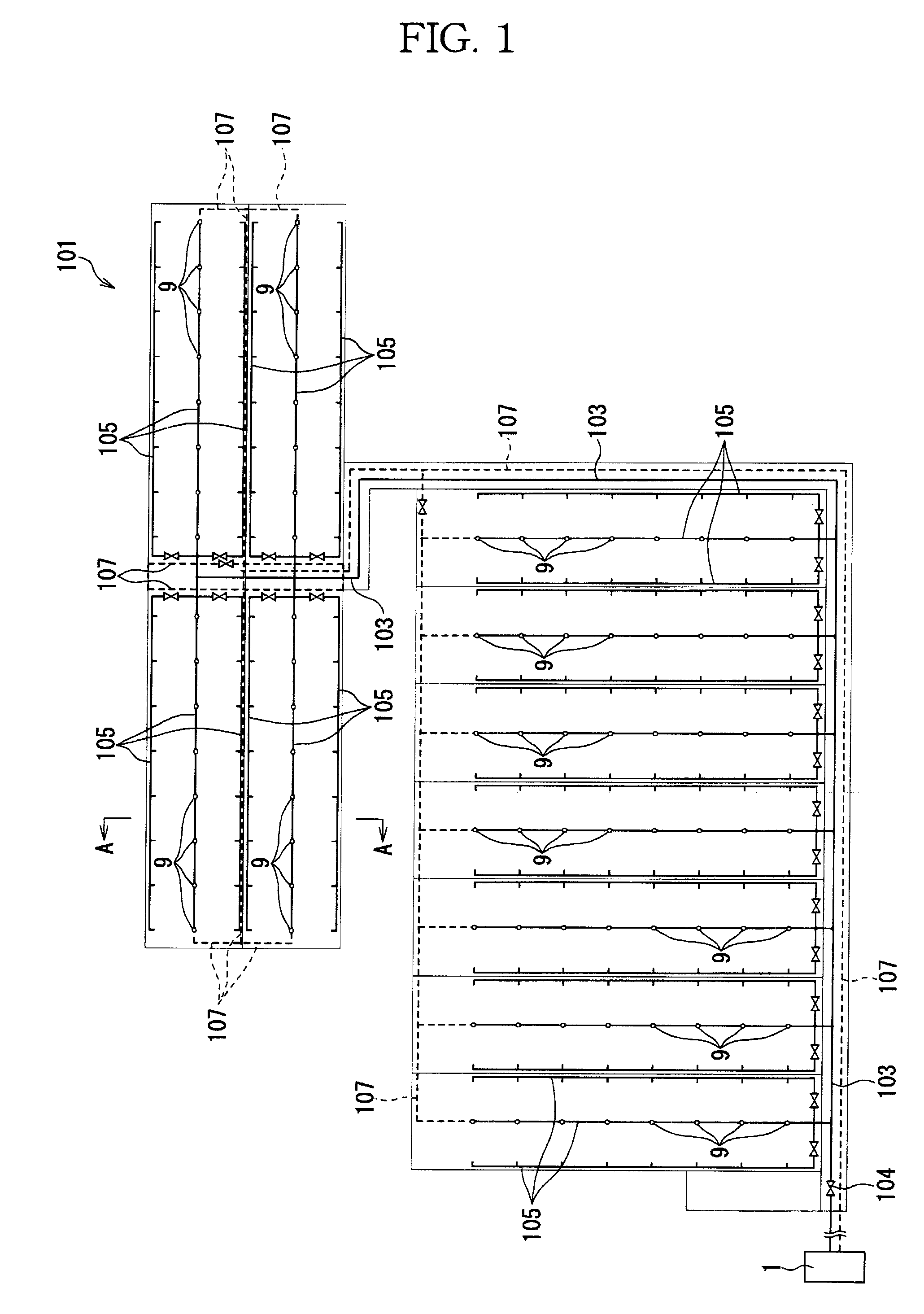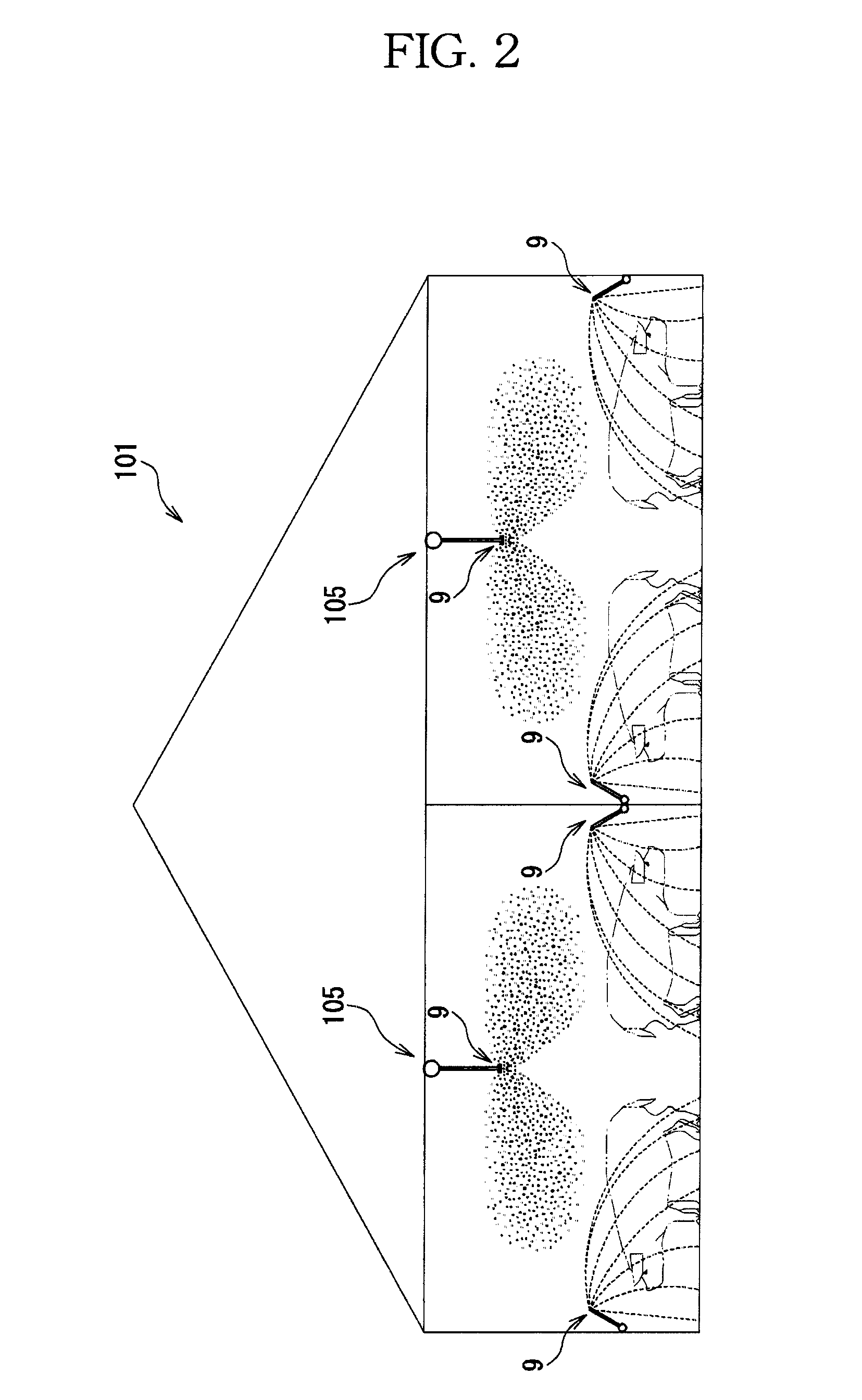Livestock sterilizing method, livestock sterilizing apparatus, and livestock or livestock meat
a technology for sterilizing equipment and livestock, applied in grooming devices, transportation and packaging, water/sewage treatment by oxidation, etc., can solve the problems of foul odor of livestock, death and incomplete development of livestock, and greatly affect the death of livestock raisers, so as to prevent foul odor and livestock diseases, effectively inhibit ozone escape, and effectively sterilize
- Summary
- Abstract
- Description
- Claims
- Application Information
AI Technical Summary
Benefits of technology
Problems solved by technology
Method used
Image
Examples
experiment 1
(Experiment 1)
[0087]As described in the above described Non-patent Document 2, the dissolved ozone easily escapes or decomposes by spraying the ozonized water, but the inventor and the others confirmed by experiment 1 that the escape or decomposition can be effectively suppressed by fragmenting the clusters of raw water (activation of the raw water) as the method for suppressing the speed of escape or decomposition on the occasion of pressurizing and spraying. The result of the experiment 1 is as shown in Tables 2 and 3.
TABLE 2TIME TO REACHTIME TO REACHCONCENTRATIONCONCENTRATION2 ppm4 ppmPRODUCE OZONIZED32 min 50 sec72 min 10 secWATER DIRECTLYFROM TAP WATERFRAGMENT25 min 20 sec60 min 20 secCLUSTERSRECORDED BY TIME AT THE TIME POINT WHEN ULTRAVIOLET RAY ABSORPTION TYPE OZONIZED WATER DENSITOMETER VALUE SHOWS PREDETERMINED CONCENTRATION CONTINUOUSLY FOR 10 SEC OR MORE
[0088]Table 2 shows the comparison of the times until the ozonized water reaches the ozone concentrations of 2 ppm and ...
experiment 2
(Experiment 2)
[0090]In the experiment 2, the ozonized water was sprayed in the test room in which the ozonized water used in the experiment 1 was sealed, and the ozone concentration in the test room was measured with the lapse of time. The comparison targets were the ozonized water which was not subjected to cluster fragmentation, and the ozonized water produced by an electrolytic method. The test room was formed by partitioning the space of a depth of 1700 mm, a width of 2800 mm and a height of 2050 mm with a resin sheet. The inside of the test room had no wind or odor. The ozone water of 4 ppm was pressurized to the pressure of 0.4 MPa (4 kg / cm2) and the average particle size was made 110 to 150 μm. The spraying angle was made about 90° downward from the test room ceiling. The experimental result is as shown in Table 4. The lower part of Table 4 is a graphic plot of what is shown in the upper part of Table 4.
TABLE 4OZONIZED WATER PRODUCING METHOD ANDINDOOR OZONIZED GASCONCENTRATIO...
experiment 3
(Experiment 3)
[0092]In the experiment 3, the comparison experiment of the produced ozone concentration for producing the ozonized water of which ozone concentration after spraying is 3 ppm or more was conducted in the relationship with the pressure of the ozonized water before spraying. The ozone concentration after spraying was measured by the ultraviolet ray absorption device by extracting the sprayed ozonized water. Since the sprayed ozone easily reacts with the organic matters and the like in the atmosphere into which it is sprayed and decomposes, it was extracted at the position of about 10 cm from the nozzle in order to prevent the reaction with them as much as possible. The ozone concentration (produced concentration) of the produced ozonized water was changed stepwise from 2 to 20 ppm, and nozzle spraying of it was performed by the pumps having different discharge pressures. The average particle size of the sprayed ozonized water was 80 μm at 0.5 MPa (5 kg / cm2), and was 40 μ...
PUM
| Property | Measurement | Unit |
|---|---|---|
| Temperature | aaaaa | aaaaa |
| Temperature | aaaaa | aaaaa |
| Fraction | aaaaa | aaaaa |
Abstract
Description
Claims
Application Information
 Login to View More
Login to View More - R&D
- Intellectual Property
- Life Sciences
- Materials
- Tech Scout
- Unparalleled Data Quality
- Higher Quality Content
- 60% Fewer Hallucinations
Browse by: Latest US Patents, China's latest patents, Technical Efficacy Thesaurus, Application Domain, Technology Topic, Popular Technical Reports.
© 2025 PatSnap. All rights reserved.Legal|Privacy policy|Modern Slavery Act Transparency Statement|Sitemap|About US| Contact US: help@patsnap.com



